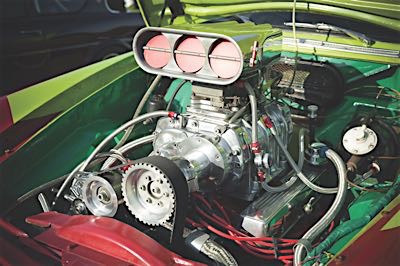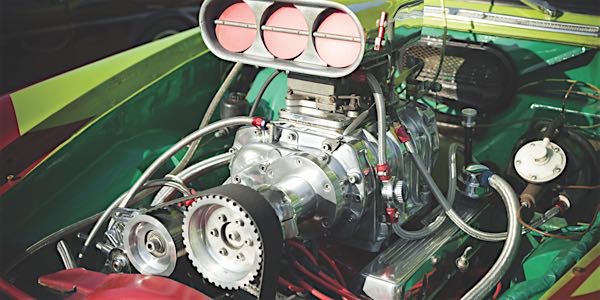
Everybody loves a supercharger poking through the hood of a hot rod. But, these blowers originally made by GMC were used on diesel engines. These units were placed on the exhaust side of a two-stroke diesel engine to create a scavaging effect. Many of these blowers were installed on trucks, buses and used on WWII military vehicles like landing crafts and tanks. These were often called “Iron Lungs” or “Screaming Jimmies.” The first hot rodder to use a GMC blower was Barney Navarro in 1948. The flathead Ford V8 used four V-belts to turn the supercharger.














